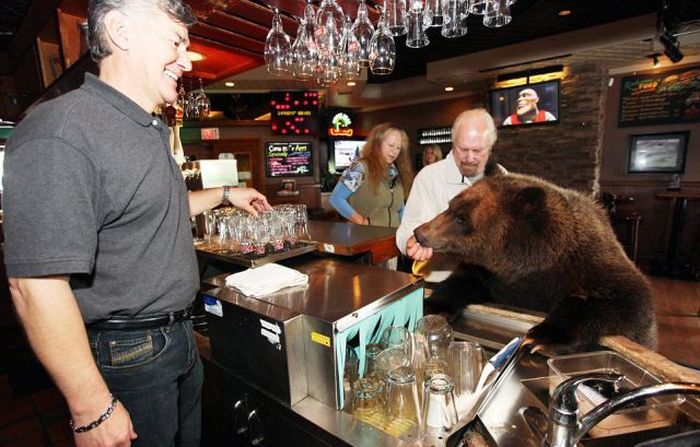|
|
Billy, Grizzly Bear Pet, Vancouver, British Columbia, Canada
|
Ecological role
The grizzly bear has several relationships with its ecosystem. One such relationship is a mutualistic relationship with fleshy-fruit bearing plants. After the grizzly consumes the fruit, the seeds are dispersed and excreted in a germinable condition. Some studies have shown germination success is indeed increased as a result of seeds being deposited along with nutrients in feces. This makes grizzly bears important seed distributors in their habitats.
While foraging for tree roots, plant bulbs, or ground squirrels, bears stir up the soil. This process not only helps grizzlies access their food, but also increases species richness in alpine ecosystems. An area that contains both bear digs and undisturbed land has greater plant diversity than an area that contains just undisturbed land. Along with increasing species richness, soil disturbance causes nitrogen to be dug up from lower soil layers, and makes nitrogen more readily available in the environment. An area that has been dug by the grizzly bear has significantly more nitrogen than an undisturbed area.
|
|









